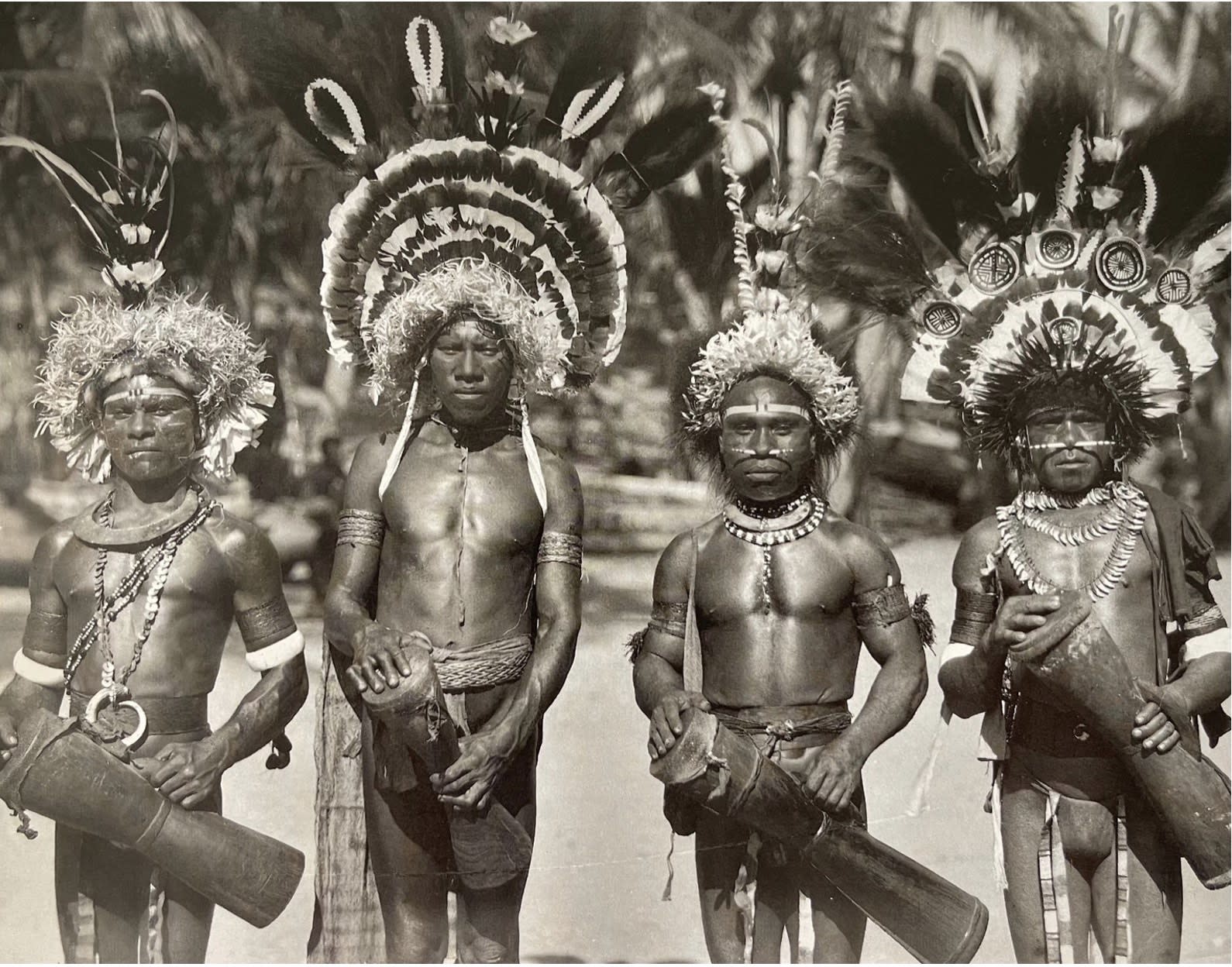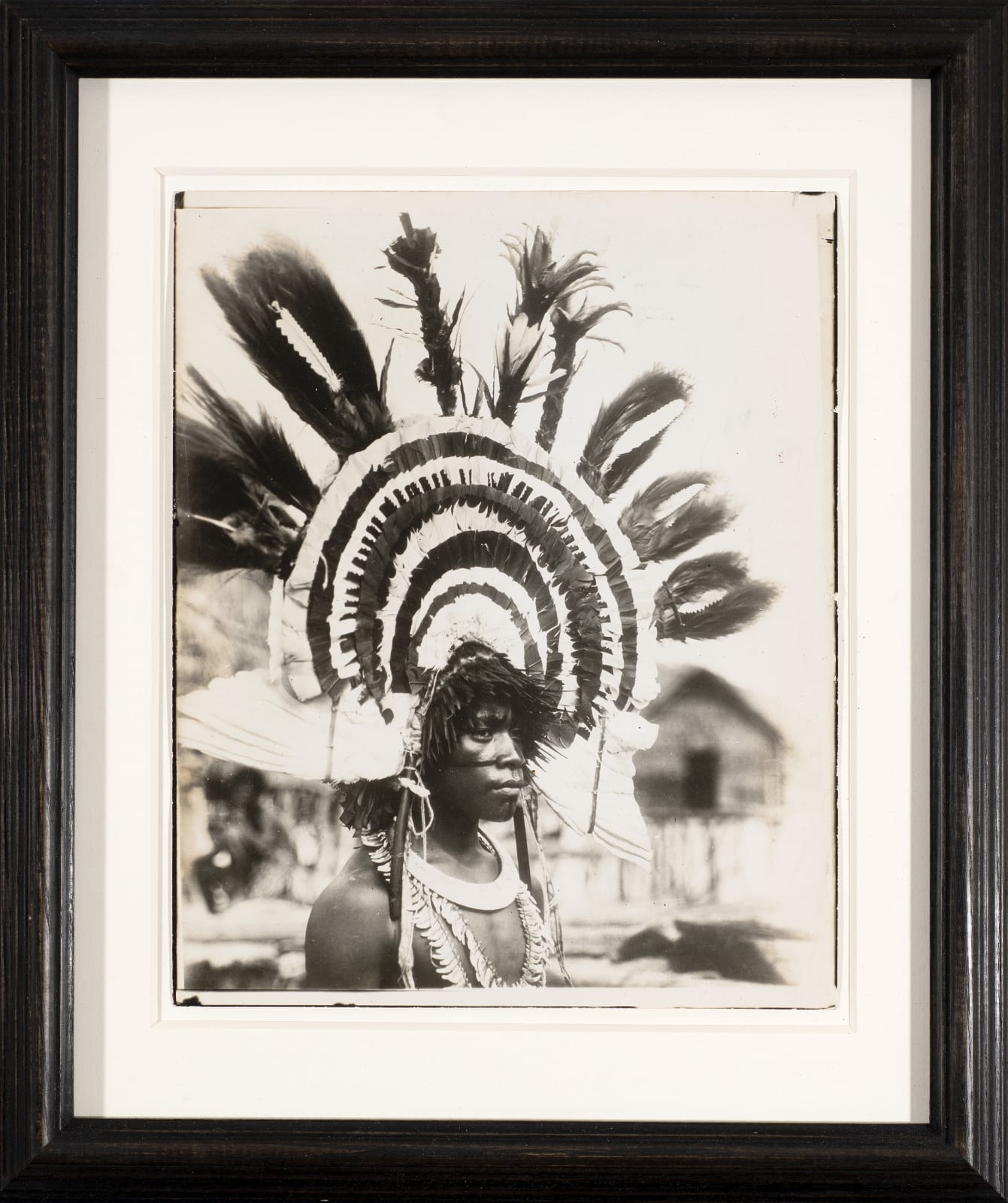Artworks
Frank Hurley (1885 - 1962)
Further images
New Guinean with parrot and bird of paradise plumed headdress
New Guinean with parrot and bird of paradise plumed headdress
Inscribed in pencil on the reverse: The Montuan men wear the / millinery dazzling creations made from / parrot feathers surmounted with / gorgeous plus of the Raggiana bird / of paradise plume. New Guinea
Stamped on reverse: International News Photos
Silver gelatin print
25.4 x 20.3 cm. (10 x 8 in.)
‘In a photographic career spanning nearly sixty years, Frank Hurley secured for himself an international reputation for imaginative and innovative work. For many people today he is best remembered for some of his early picture postcard photographs, his First World War scenes or his documentation of Antarctic exploration. Few beyond a small coterie of anthropologists and archaeologists are familiar with his photographs taken in Torres Strait and Papua New Guinea between 1920 and 1923.’[1]
Hurley’s first visit to Papua took place in 1920-21, and lasted 9 months, with the purpose of taking photographic plates and film for an anthropological film, Pearls and Savages. Much of his time was spent at or around European settlements and in areas where cultural exchange was already well underway, only visiting areas less influenced by government and missionary activity towards the end of his trip. On his return to Sydney in August 1921, Hurley felt his film lacked in excitement and dramatic scenes, and he promptly began plans for a return trip to improve the film and extend its scope. His second expedition of 1922-23, unlike his previous solo affair, was a team effort and well equipped, giving him the dramatic footage he needed to improve his film. Hurley returned to Sydney in 1923, and the following year he personally promoted the revised film in the USA and Great Britain. The present photograph likely relates to this promotional activity.
To judge from the extraordinary headdress, the image was likely captured in 1921 during the first trip, at the coastal village of Hanuabada near Port Moresby. Another photograph from Hanuabada shows four male dancers, who wear very comparable bird of paradise headdresses. Hanuabada, which means ‘Great Village’, was populated by the Motu, a sea-orientated people who traded with the inland Koitu. Around his neck the sitter wears a mairi shell crescent and two necklaces made of dog’s teeth, called a dodoma. The plumes of the Raggiana bird-of-paradise, today the national emblem of Papua New Guinea, probably came from the Koiari people, inland behind the Koita.[2]

Fig. 1, Frank Hurley, Male Dancers at Hanuabada, August 1921





